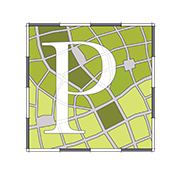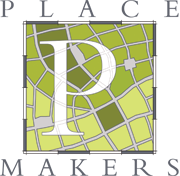Posts Tagged ‘Kaid Benfield’
Transit Oriented Development: A few notes from Winnipeg BRT
This Monday, the Downtown Winnipeg BIZ convened a Transit Oriented Development Summit, to talk about how to make neighbourhoods around Winnipeg’s new Bus Rapid Transit system sing. Right from the start, it was great to see downtown businesses understand that the strength of the spokes adds up to a stronger wheel. Stefano Grande, the head…
Read MoreLessons Learned from Berlin Shopfronts
Like many European cities, Berlin teaches us myriad lessons in building successful shopfronts. While the exclusive international shops along Kurfürstendamm and Friedrichstrasse are elegant and effective, the more creative successes are found in neighborhoods and courtyards. Kaid Benfield’s People Habitat describes in detail the reasons Hackeschen Höfe is so successful at the holistic level, and…
Read MoreAn Interview with Kaid Benfield, Newly-Announced ‘Senior Counsel’ for PlaceMakers
Many of you know — or know of — Kaid Benfield, who’s led smart growth and sustainability initiatives at the Natural Resources Defense Council for two decades. Kaid is stepping down from his NRDC post. And we’re delighted to announce that he’ll become Senior Counsel for Environmental Strategies for PlaceMakers, effective the first of January.…
Read More“People Habitat”: Kaid Benfield takes Smart Growth to a higher level
For several weeks now I’ve intended to write up my thoughts on “People Habitat,” the recently-released book from NRDC smart growth sensei — and friend — Kaid Benfield. Not that it’s anything he needs, mind you. A quick look at his reviews over on Amazon reveals a diverse collection of accolades, consistent only in their…
Read MoreUrban Happiness Index Revisited
A couple of weeks ago I floated some ideas on a national Urban Happiness Index. Similar to Gallup-Healthways Well-Being Index and Bhutan’s Gross National Happiness index, which is being contemplated by China, an Urban Happiness Index would tie satisfaction and wellbeing to the form of the built environment. Perhaps an alternative idea would be the…
Read MorePopsicles and the Importance of Simplicity
Back in June, I wrote a piece about how, compared to sprawl, smart growth produces places better suited to raising children. The overall takeaway was simple: When kids are able to navigate the world around them, manage conflicts, make decisions, screw up and recover, they’re better off for it. And place is a big contributor…
Read MoreUnplug! Accommodating Our Need to Escape Each Other
Sense of community. It’s been a rallying cry of New Urbanists since the beginning and for good reason. For years leading up to the birth of the neo-traditionalists, it didn’t take much effort to realize that our surroundings had changed—a lot—and not for the better. Our neighborhoods—subdivisions, really—were isolating us from each other and from…
Read MoreSeason’s Greetings from Alabama: Where Stars Aligned
Here’s a story of hope for the holidays. And like most good stories, it begins with bad news. On April 20, BP’s Deepwater Horizon oil well in the Gulf of Mexico exploded, killing 11 of its 126 rig workers. That was the first tragedy. Then, came the second, as oil from the uncapped well began…
Read More
